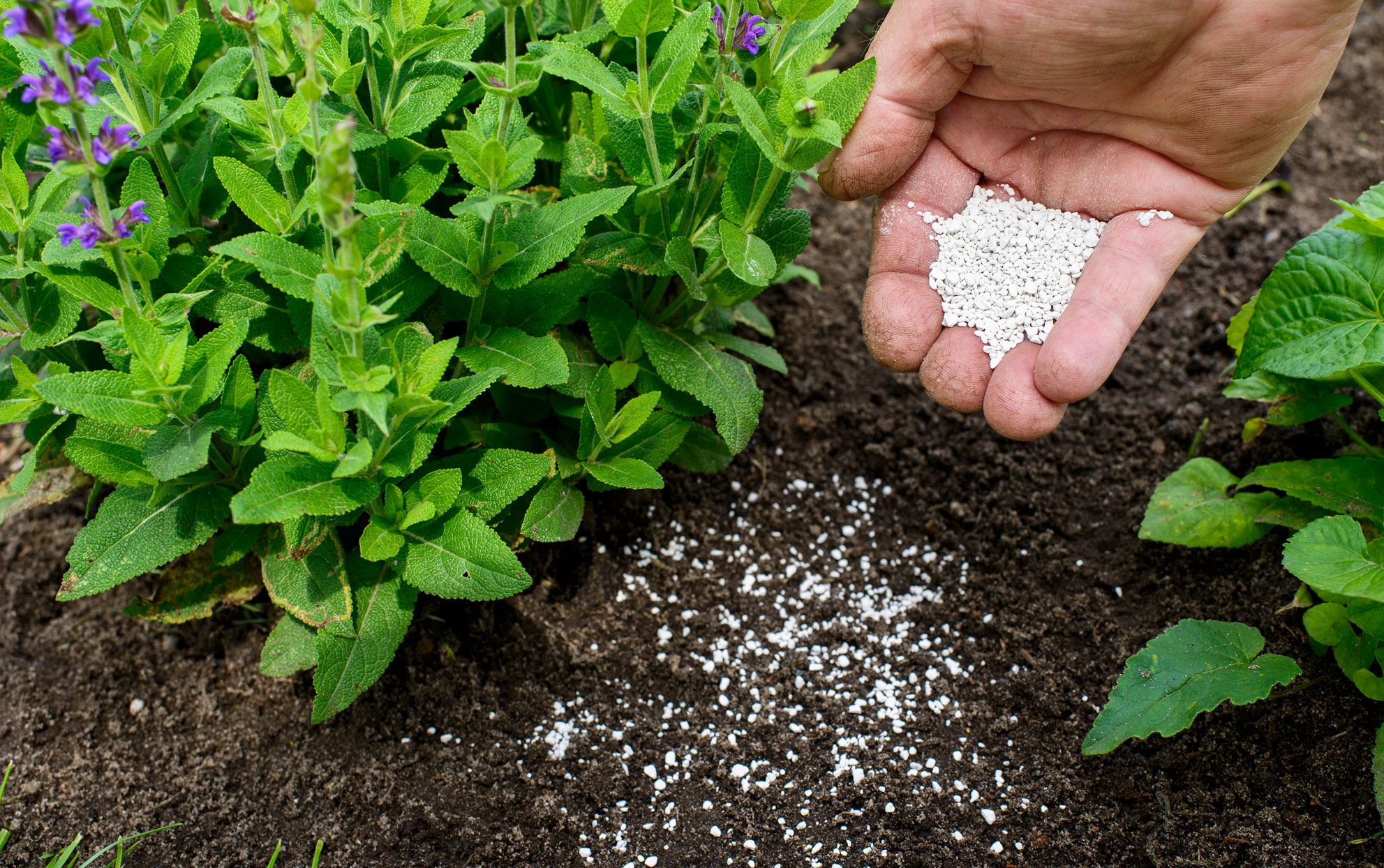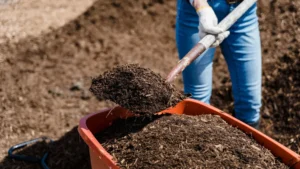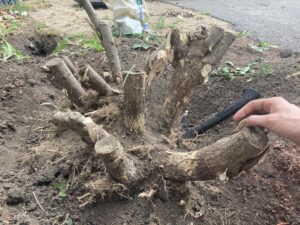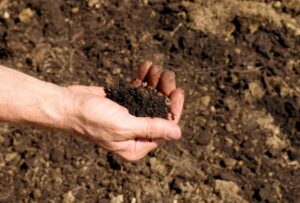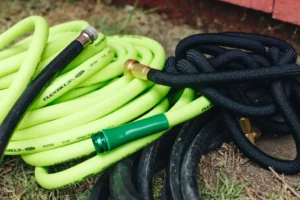When planning a landscaping project or enhancing your garden, one of the crucial decisions you’ll face is what size and type of mulch to buy. Mulch serves multiple purposes, including moisture retention, weed suppression, and aesthetic enhancement. Understanding the different sizes and types of mulch, as well as how much you need, can significantly impact the success of your gardening efforts.
When selecting mulch for your landscaping or gardening needs, the size and type of mulch are crucial factors that can impact both functionality and aesthetics.
- Size of Mulch:
- Small Mulch (Fine): Typically ranges from 1/4 to 1/2 inch. Ideal for gardens, flower beds, and around young plants as it breaks down quickly, enriching the soil and aiding in moisture retention.
- Medium Mulch: Sizes around 1/2 to 1 inch. Suitable for general landscaping applications, it provides a balance of coverage and longevity.
- Large Mulch (Coarse): Usually 1 to 3 inches or more. Great for decorative purposes, pathways, and areas around established trees and shrubs. It tends to decompose slower and can suppress weeds effectively.
- Types of Mulch:
- Organic Mulch: Made from natural materials like wood chips, bark, straw, or leaves. These materials break down over time, adding nutrients to the soil.
- Inorganic Mulch: Includes options like rubber mulch or gravel. These materials do not decompose and are often used for pathways or in decorative applications.
- Application Considerations:
- For flower and vegetable gardens, opt for fine to medium mulch (1/4 to 1 inch) to allow for soil enrichment and adequate water penetration.
- For decorative areas or established plants, coarse mulch (1 to 3 inches) can enhance appearance and provide effective weed suppression.
- When covering large areas like pathways or under trees, consider larger chunks of mulch to reduce maintenance.
- Buying Recommendations:
- When purchasing mulch, consider the depth you want to achieve (typically 2 to 4 inches) and calculate the area you need to cover. This will help determine how much mulch to buy.
- Always check local suppliers for the types available and their sizes, as this can vary by region and store.
What Size Mulch Should I Buy for Grass?
When selecting mulch for grass areas, the type and size are essential considerations. Typically, grass does not require mulch in the same way that flower beds or gardens do. However, if you are using mulch for lawn projects, such as establishing a new lawn or repairing patches, a fine mulch or compost is preferable.
Recommended Size and Type:
- Size: Fine mulch (usually 1/4 to 1/2 inch in size) is ideal for mixing into soil or as a top-dressing to promote seed germination and soil health. Coarse mulch can be counterproductive, as it may block light from reaching new grass seedlings.
- Type: Organic options like compost or finely shredded leaves work well. They decompose quickly, enriching the soil without creating an impenetrable barrier.
Application:
When applying mulch in grass areas, keep it thin (around 1/4 inch) to prevent smothering the grass and to allow adequate sunlight and air to reach the soil.
What Kind of Mulch Should I Buy Besides Grass?
While grass may not need traditional mulch, other areas of your landscape will benefit from it. Here’s a breakdown of different types of mulch for various landscaping needs:
Types of Mulch:
- Organic Mulch:
- Wood Chips: Great for pathways and around trees. They break down over time, adding nutrients to the soil.
- Bark Mulch: Excellent for flower beds and shrubs. It provides a natural appearance and helps retain moisture.
- Inorganic Mulch:
- Rubber Mulch: Long-lasting and effective for playgrounds or garden paths. It does not decompose but can retain heat.
- Gravel: Best for drainage and rock gardens. It prevents weed growth while allowing water to pass through.
Selection Tips:
Consider your garden’s aesthetic, the type of plants you have, and the mulch’s longevity when making a decision.
How Much Mulch Should I Use?
Determining how much mulch to use involves measuring the area you plan to cover and deciding on the desired depth of mulch. Typically, a depth of 2 to 4 inches is recommended for flower beds, while pathways may require less.
Calculation:
- Measure the Area: Calculate the square footage by multiplying the length by the width of the area to be mulched.
- Decide on Depth: Choose a depth based on your plants’ needs; 2 to 3 inches is often sufficient.
- Calculate Volume:
For cubic feet:
$$[\text{Cubic Feet} = \text{Square Footage} \times \text{Depth (in feet)}]$$
For cubic yards:
$$[\text{Cubic Yards} = \frac{\text{Cubic Feet}}{27}]$$
Example:
For a 100-square-foot garden at a depth of 3 inches:
- Convert depth to feet: 3 inches = 0.25 feet
- Cubic Feet = 100 sq. ft. × 0.25 ft = 25 cubic feet
- Cubic Yards = 25 / 27 ≈ 0.93 cubic yards.
How Much Mulch for Garden?
When mulching a garden, the amount needed depends on the size and depth of the mulch layer. For most garden beds, a 2- to 3-inch depth is standard.
General Guidelines:
- 2 Inches: For flower beds, vegetable gardens, or new plantings.
- 3 Inches: In areas prone to weeds or if you desire better moisture retention.
Application:
Spread mulch evenly and avoid piling it against plant stems or tree trunks, which can lead to rot and pest issues.
What Size Mulch Should I Buy Besides Grass Seed?
If you’re looking to improve soil quality or enhance the landscape in areas besides grass seed planting, consider the following:
Size Options:
- Fine Mulch: Best for enriching soil; use in vegetable or flower gardens to promote growth.
- Coarse Mulch: Suitable for decorative purposes or around trees, offering an appealing appearance and better drainage.
Here’s a detailed overview of the average cost of mulch in the top 50 cities in the USA. The costs can vary based on the type of mulch (e.g., hardwood, cedar, rubber) and local market conditions. This table reflects approximate costs per cubic yard for popular types of mulch commonly used in landscaping.
| City | State | Average Cost per Cubic Yard | Common Mulch Types | Notes |
|---|---|---|---|---|
| New York City | NY | $80 – $120 | Hardwood, Pine, Cedar | Prices vary by neighborhood; delivery fees may apply. |
| Los Angeles | CA | $70 – $100 | Bark, Wood Chips, Rubber | Higher costs in coastal areas. |
| Chicago | IL | $50 – $80 | Hardwood, Cedar | Seasonal demand can affect pricing. |
| Houston | TX | $35 – $60 | Pine Bark, Hardwood | Lower costs due to local suppliers. |
| Phoenix | AZ | $45 – $70 | Rock, Rubber, Bark | Decomposed granite popular in arid areas. |
| Philadelphia | PA | $50 – $85 | Hardwood, Pine, Cypress | Price influenced by local suppliers. |
| San Antonio | TX | $30 – $50 | Cypress, Hardwood | Budget-friendly options available. |
| San Diego | CA | $70 – $90 | Bark, Wood Chips | Coastal mulch options are premium. |
| Dallas | TX | $40 – $60 | Hardwood, Rubber | Competitive pricing from various retailers. |
| San Jose | CA | $75 – $95 | Cedar, Bark | Premium options available for landscaping. |
| Austin | TX | $35 – $55 | Hardwood, Pine | Local mulching services often provide deals. |
| Jacksonville | FL | $40 – $60 | Cypress, Pine | Abundant local sources help keep prices low. |
| Fort Worth | TX | $35 – $50 | Hardwood, Rubber | Low prices due to proximity to suppliers. |
| Columbus | OH | $50 – $75 | Hardwood, Bark | Prices can vary based on local distributors. |
| Charlotte | NC | $45 – $65 | Pine Bark, Hardwood | Competitive market with various options. |
| San Francisco | CA | $90 – $120 | Bark, Wood Chips | Higher prices in urban areas. |
| Indianapolis | IN | $45 – $70 | Hardwood, Pine | Regional suppliers can vary in pricing. |
| Seattle | WA | $60 – $90 | Cedar, Bark | Rainfall affects availability and cost. |
| Denver | CO | $50 – $80 | Pine, Bark | Seasonal prices influenced by demand. |
| Washington, D.C. | DC | $70 – $100 | Hardwood, Pine | Urban area prices typically higher. |
| Nashville | TN | $40 – $60 | Hardwood, Cypress | Abundant options at local garden centers. |
| Boston | MA | $60 – $90 | Bark, Hardwood | Prices vary by supplier and neighborhood. |
| El Paso | TX | $30 – $50 | Rock, Bark | Prices are competitive due to local availability. |
| Detroit | MI | $45 – $70 | Hardwood, Bark | Seasonal demand can influence pricing. |
| Memphis | TN | $35 – $55 | Pine Bark, Cypress | Local landscaping companies offer various options. |
| Baltimore | MD | $50 – $75 | Hardwood, Pine | Prices fluctuate based on local suppliers. |
| Milwaukee | WI | $45 – $70 | Bark, Wood Chips | Seasonal sales can reduce costs. |
| Portland | OR | $60 – $85 | Bark, Cedar | Urban area prices may be higher. |
| Albuquerque | NM | $35 – $55 | Rock, Pine Bark | Local options help keep prices reasonable. |
| Tucson | AZ | $40 – $60 | Bark, Rock | Native mulch types are often less expensive. |
| Fresno | CA | $50 – $80 | Hardwood, Rubber | Pricing varies based on local supply. |
| Sacramento | CA | $70 – $100 | Cedar, Bark | Higher prices for premium options. |
| Long Beach | CA | $60 – $90 | Rubber, Wood Chips | Local demand impacts costs. |
| Kansas City | MO | $40 – $60 | Hardwood, Pine | Prices vary between residential and commercial suppliers. |
| Mesa | AZ | $35 – $55 | Bark, Rock | Local retailers provide budget-friendly options. |
| Virginia Beach | VA | $45 – $65 | Pine Bark, Hardwood | Competitive market keeps prices low. |
| Atlanta | GA | $40 – $70 | Pine Straw, Hardwood | Local gardening centers offer diverse options. |
| Colorado Springs | CO | $50 – $80 | Bark, Pine | Prices fluctuate based on demand. |
| Omaha | NE | $35 – $55 | Hardwood, Cedar | Local suppliers can affect pricing. |
| Raleigh | NC | $40 – $60 | Pine Bark, Hardwood | Numerous local retailers provide options. |
| Miami | FL | $60 – $90 | Cypress, Rubber | Coastal pricing influences availability. |
| Cleveland | OH | $45 – $70 | Hardwood, Bark | Prices can vary by supplier and type. |
| Tulsa | OK | $35 – $55 | Pine Bark, Cedar | Local landscaping services offer competitive pricing. |
| Wichita | KS | $30 – $50 | Hardwood, Rubber | Abundant local supply helps keep prices down. |
| New Orleans | LA | $40 – $60 | Cypress, Bark | Local suppliers often offer seasonal deals. |
| Arlington | TX | $30 – $50 | Hardwood, Pine | Pricing is competitive due to local sources. |
| Honolulu | HI | $80 – $120 | Bark, Coconut Coir | Higher prices due to shipping costs. |
| Tampa | FL | $50 – $70 | Pine Bark, Rubber | Prices vary based on supplier and demand. |
| Anaheim | CA | $60 – $80 | Wood Chips, Bark | Higher costs in urban areas. |
| Aurora | CO | $45 – $65 | Pine, Bark | Local options help keep prices reasonable. |
| Santa Ana | CA | $65 – $85 | Rubber, Wood Chips | Premium options available for landscaping. |
| Riverside | CA | $50 – $70 | Bark, Cedar | Local supply impacts pricing. |
| Corpus Christi | TX | $30 – $50 | Pine Bark, Rubber | Budget-friendly options available. |
| Lexington | KY | $40 – $60 | Hardwood, Bark | Seasonal pricing can affect availability. |
| Henderson | NV | $35 – $55 | Bark, Rubber | Competitive pricing from local suppliers. |
| Newark | NJ | $50 – $75 | Hardwood, Pine | Urban area prices typically higher. |
| Plano | TX | $35 – $55 | Pine Bark, Hardwood | Local suppliers provide diverse options. |
| Lincoln | NE | $30 – $50 | Bark, Wood Chips | Local options help keep prices reasonable. |
| Orlando | FL | $40 – $60 | Pine Bark, Rubber | Numerous local retailers provide options. |
| Chula Vista | CA | $65 – $85 | Cedar, Bark | Higher costs in urban areas. |
Notes:
- Prices Fluctuate: The costs mentioned are approximate averages and can vary significantly based on the retailer, season, and type of mulch.
- Delivery Fees: Many suppliers charge additional delivery fees, which can add to the total cost.
- Local Variations: Availability of certain types of mulch may also affect prices, as some areas have a higher supply of specific materials.
Considerations:
When buying mulch, think about the specific needs of your plants and the conditions of your garden. Proper selection and application of mulch can improve plant health, enhance aesthetics, and reduce maintenance time in the long run.
In conclusion, selecting the right size and type of mulch for your landscaping projects is crucial. By considering the specific needs of your garden and carefully measuring the areas to be covered, you can create a healthy, attractive outdoor space that thrives throughout the seasons.
